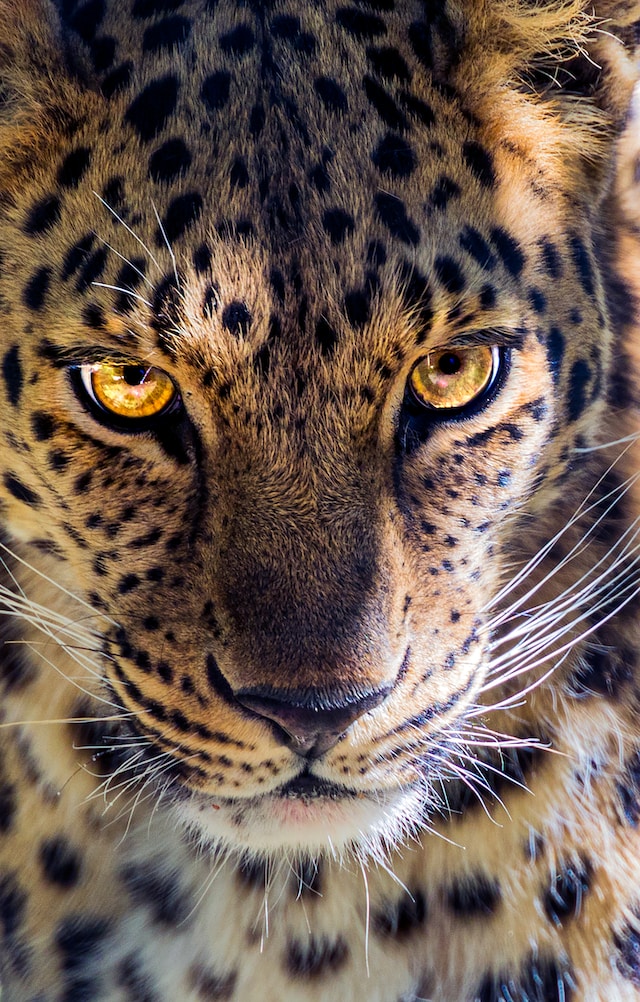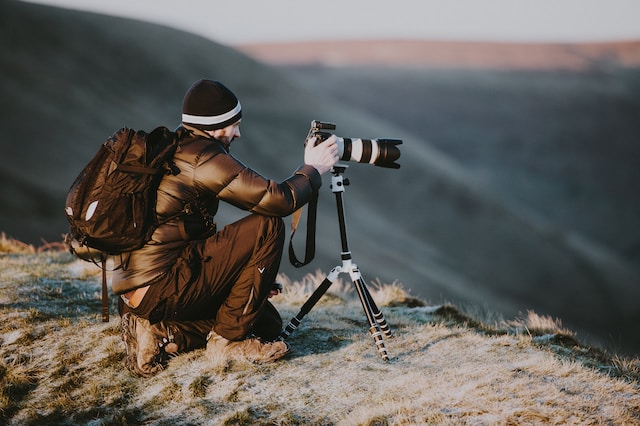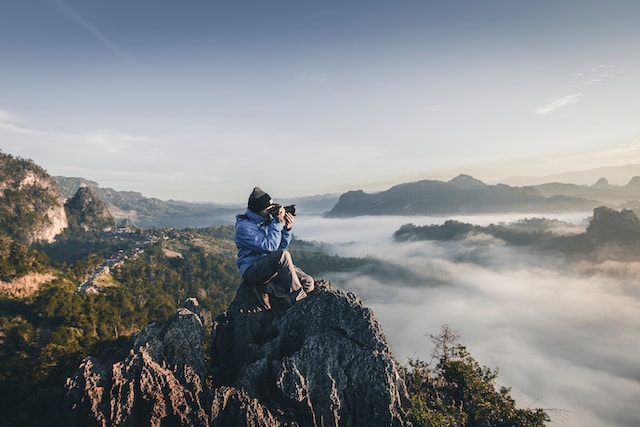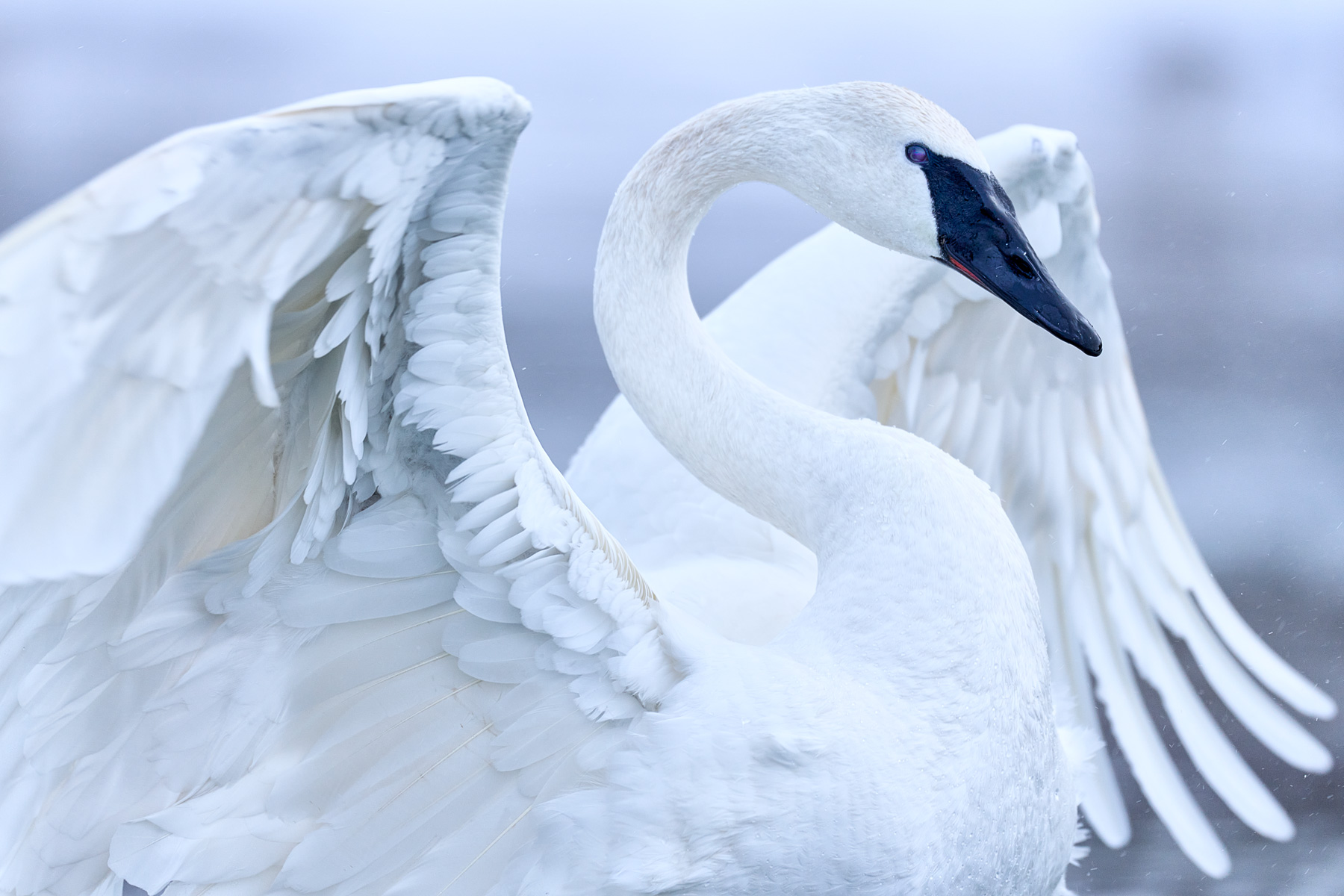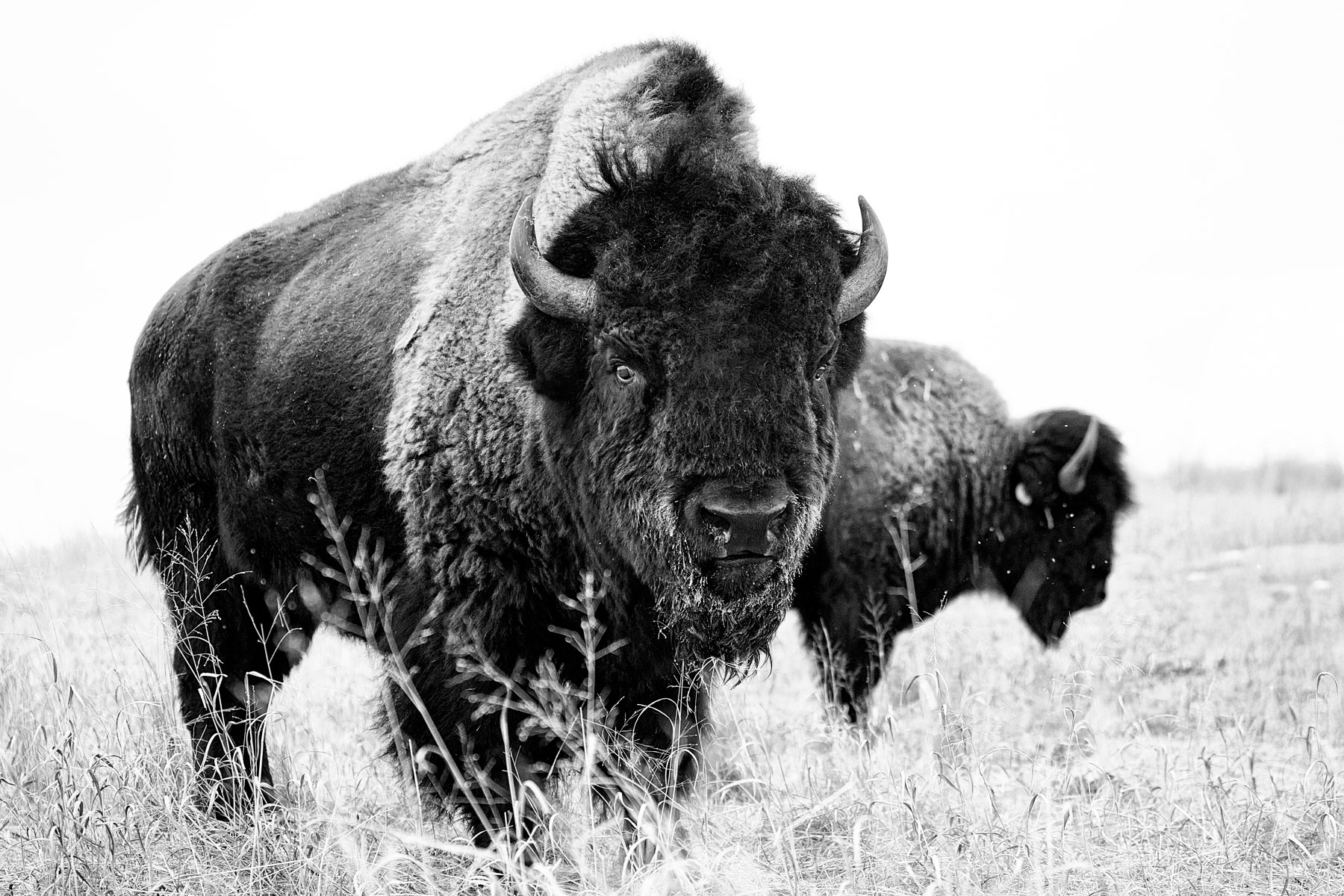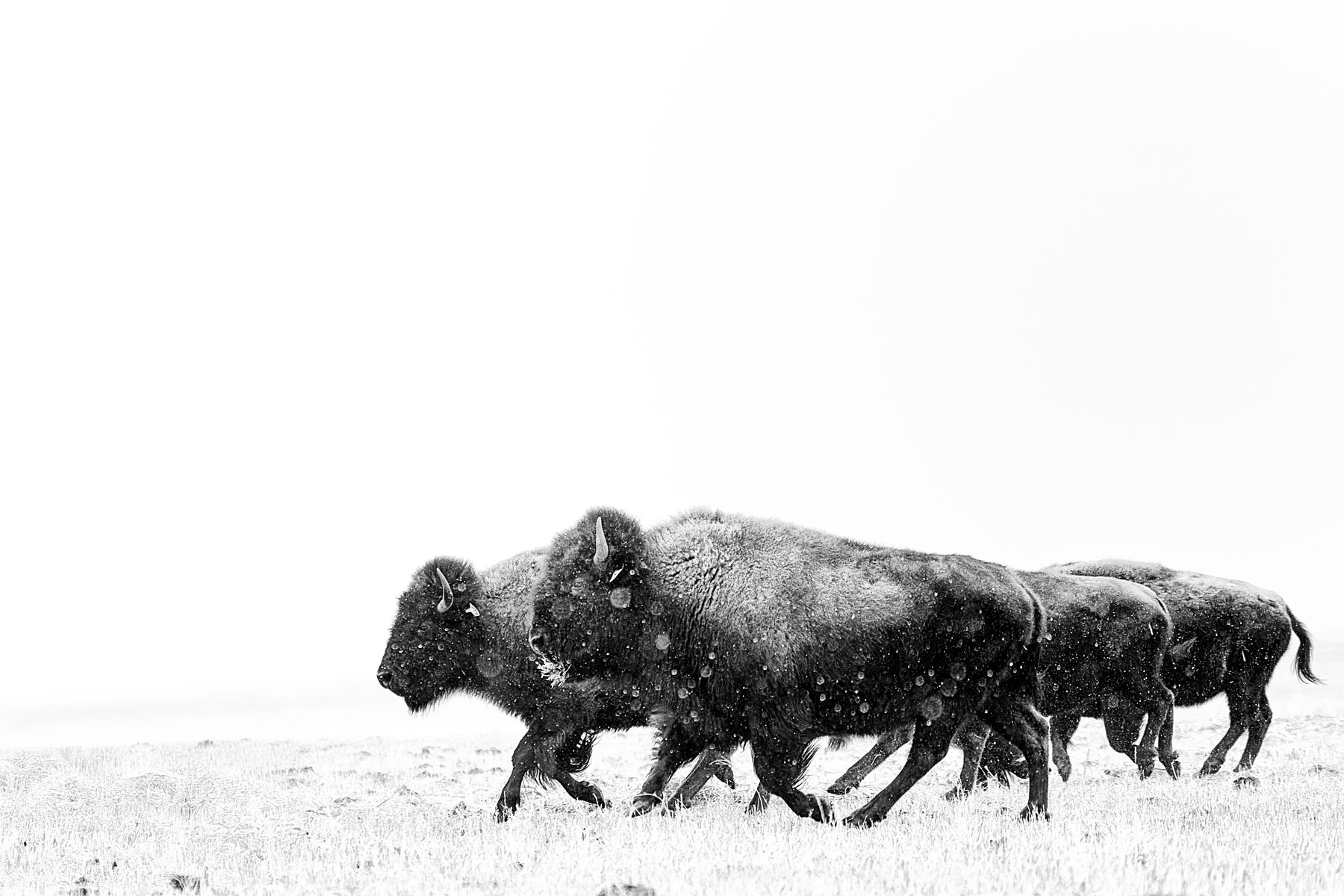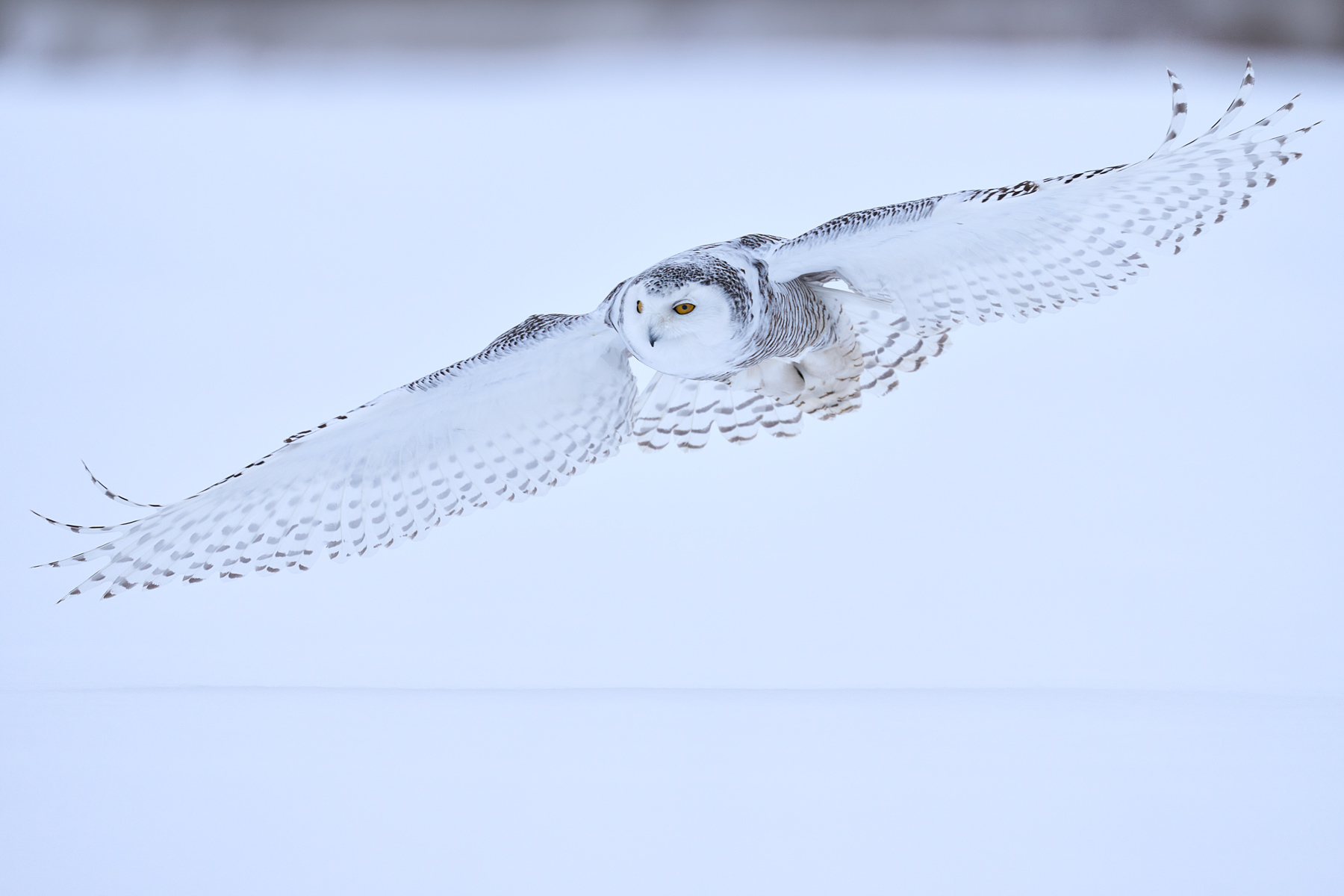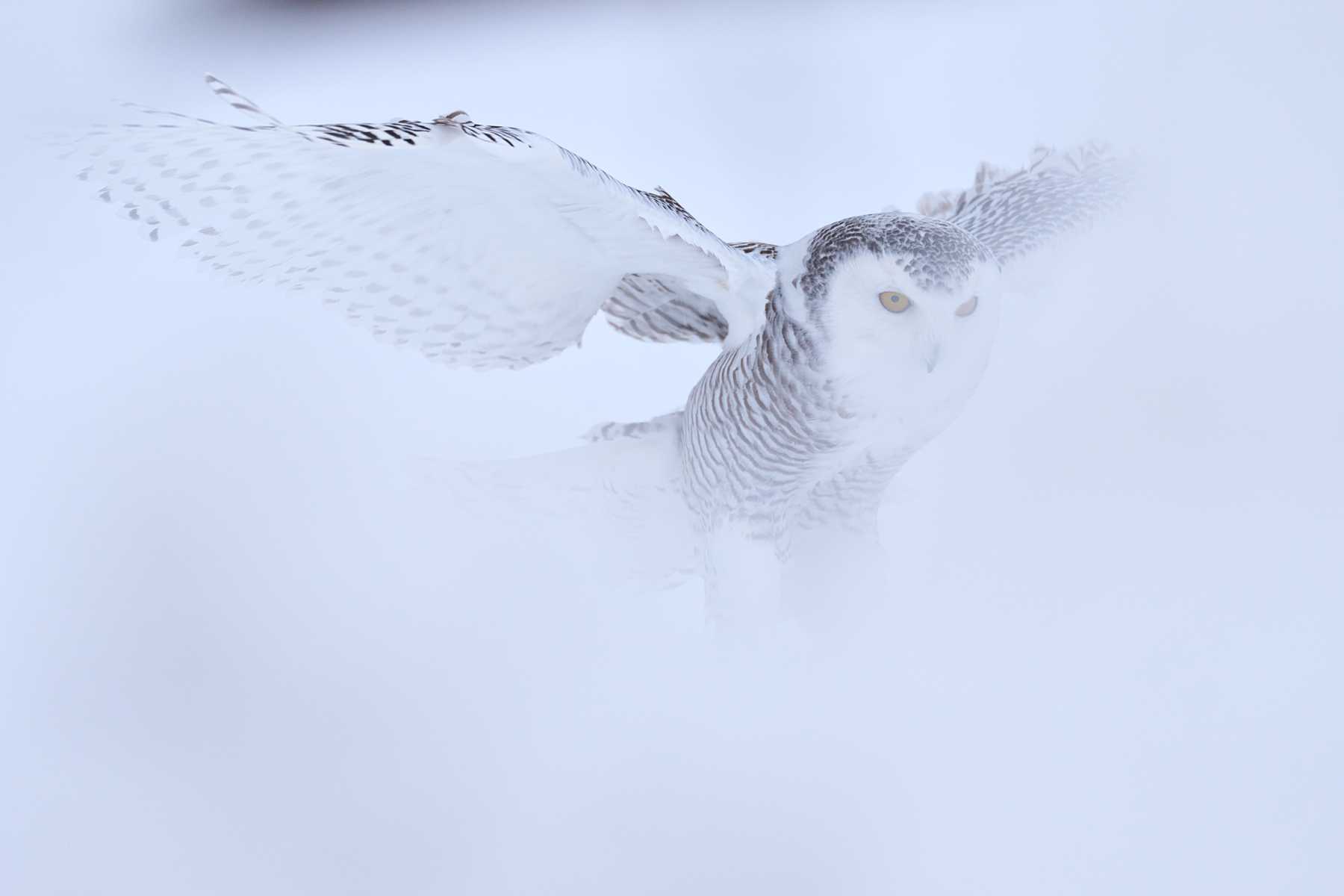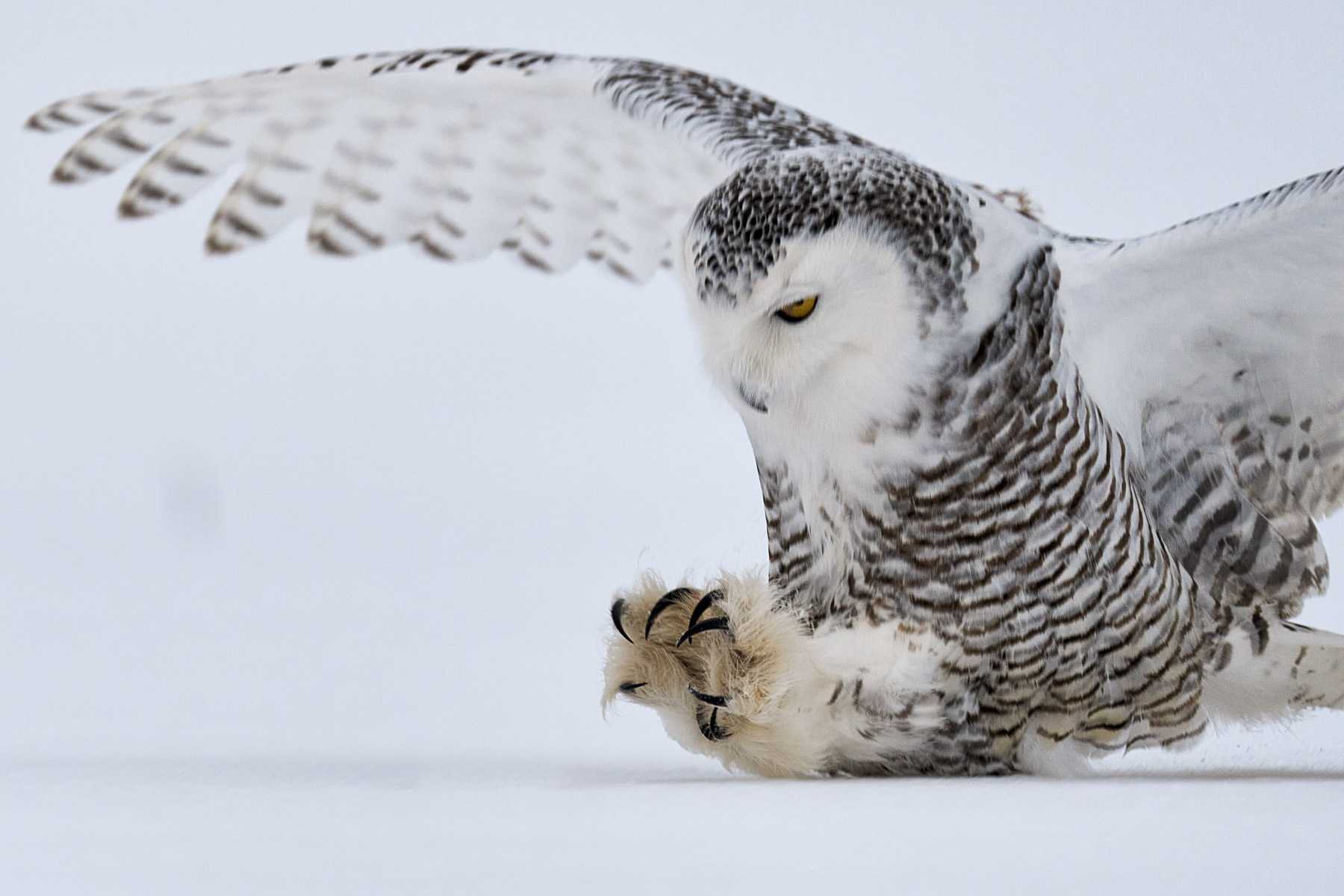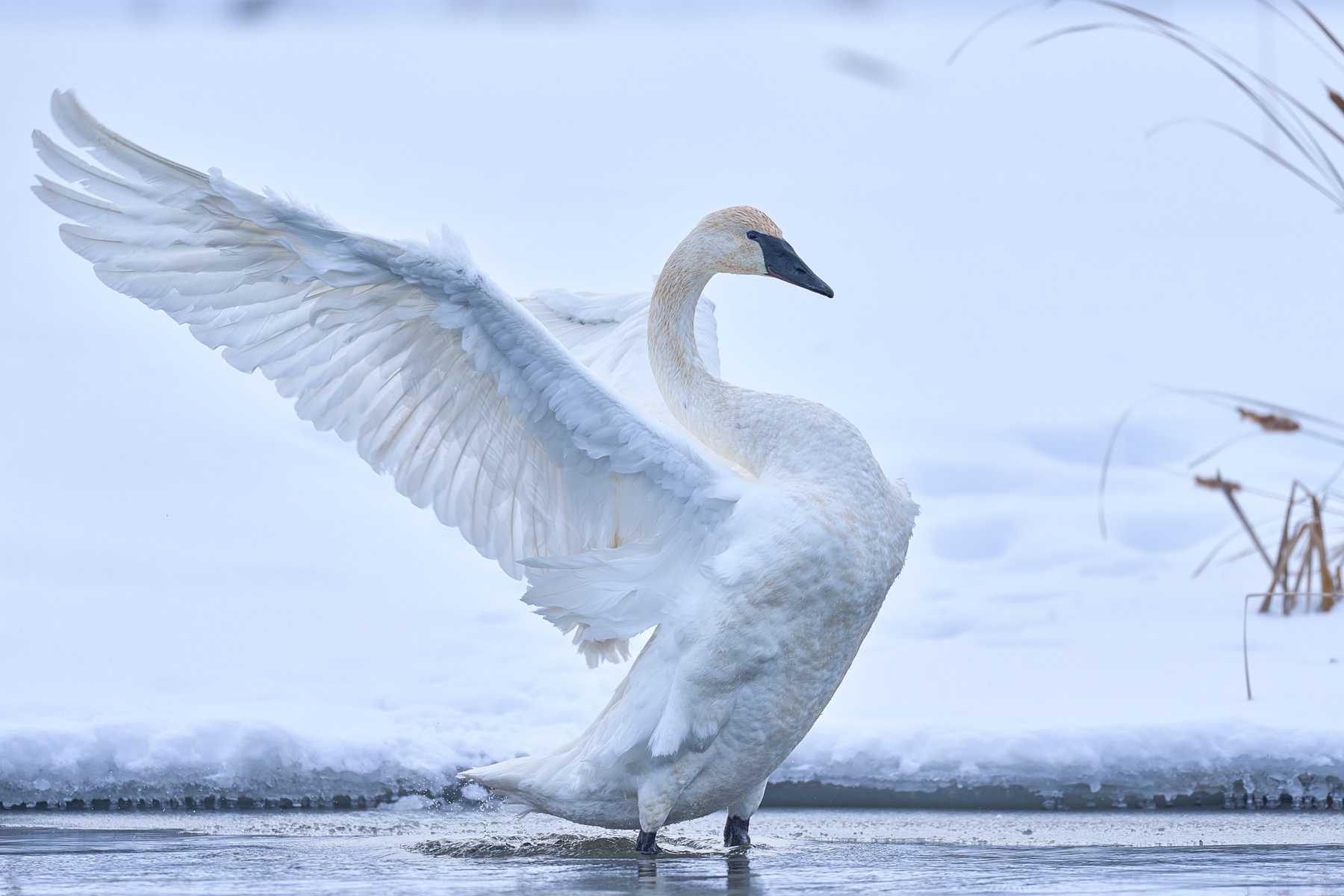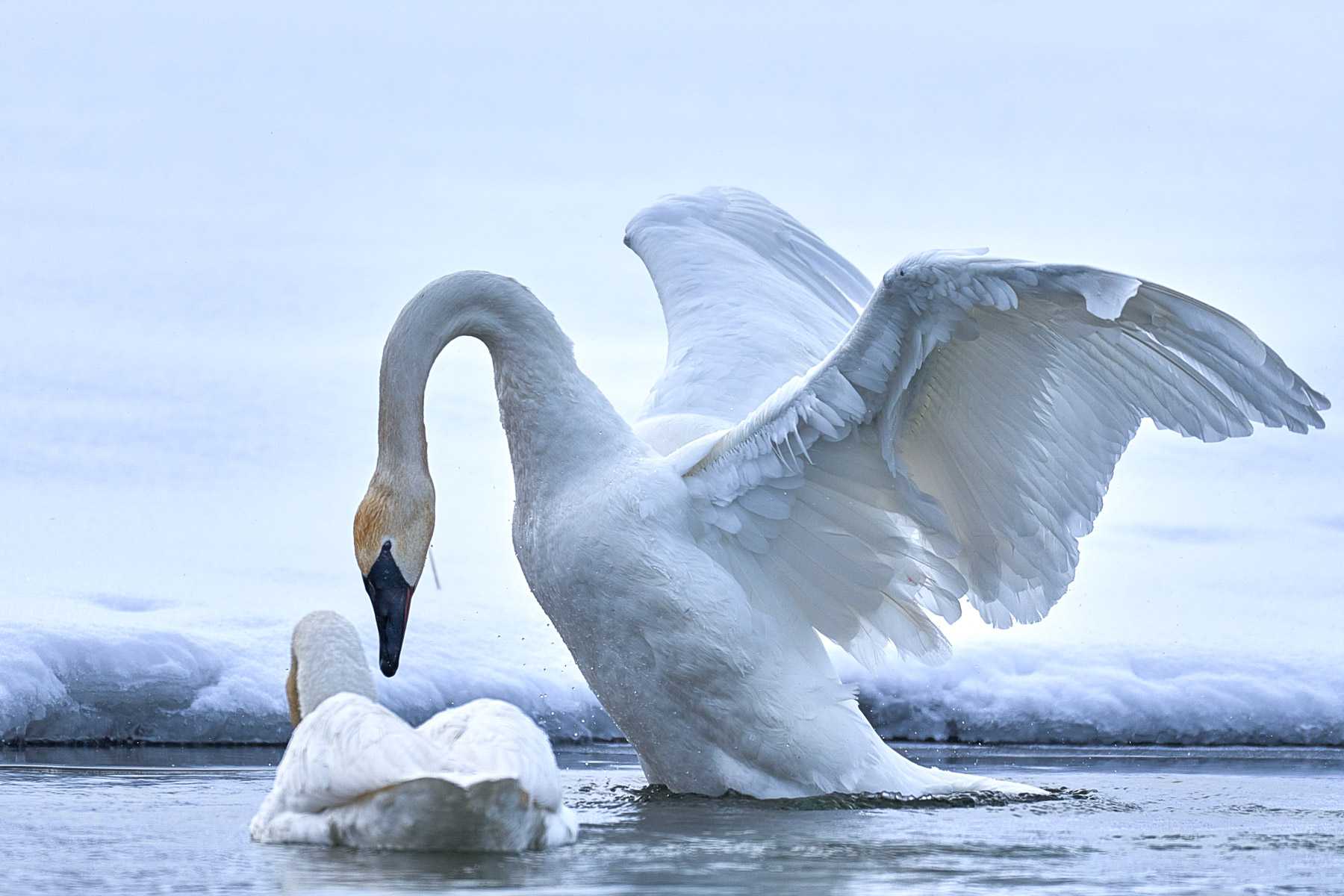Making your wildlife photography passion into a business can be an incredibly rewarding journey, but it requires a lot of hard work, planning, and strategy to make money. Here’s a step-by-step guide to help you make that dream a reality:
Research and Planning for your wildlife photography passion
Market Research:
let’s delve deeper into the crucial step of conducting market research for your wildlife photography business.
Identifying Your Target Audience
- Demographics: The first thing you should look into is who makes up your target audience. Consider factors like age, location, and income levels. For instance, if your wildlife photography specializes in luxury or fine art pieces, your target audience may consist of affluent art collectors or interior designers.
- Psychographics: Beyond the basic demographics, what are the interests, lifestyle, and buying habits of your audience? Perhaps they’re nature enthusiasts, or maybe they’re looking for unique pieces to decorate their homes or offices.
- Channels: Where does your target audience spend their time? Are they active on social media platforms like Instagram or Pinterest where visuals play a key role? Or do they frequent art galleries, exhibitions, and auctions?
- Needs and Preferences: What is it that your audience is specifically looking for in wildlife photography? Do they prefer specific animals, settings, or types of print materials?
By thoroughly understanding your target audience, you can tailor your products, pricing, and promotional strategies to meet their needs more effectively.
Understanding Your Competition
- Direct Competitors: Identify other wildlife photographers or companies that offer similar products or services. What are their strengths and weaknesses?
- Indirect Competitors: These are businesses that may offer a different product or service but satisfy the same need. For instance, a general art photographer could be an indirect competitor.
- Unique Selling Proposition (USP): Based on your understanding of your competitors, figure out what sets your work apart. It could be the subjects you choose, your style of photography, your printing methods, or any other feature that makes your product unique.
- Market Share: Try to estimate how much of the market your competitors have captured. This will give you an idea of the market potential and how much room there is for you to make an impact.
Understanding Trends and What Sells
- Popular Subjects: Keep an eye on what animals or settings are currently popular in wildlife photography. Sometimes certain animals or themes can trend due to social or environmental issues, documentaries, or even popular culture.
- Technological Trends: Are there new printing technologies or presentation methods that are becoming popular, such as augmented reality displays or interactive installations?
- Consumer Behavior: Are customers more interested in purchasing digital downloads, prints, or complete framed artwork? Do they prefer online shopping or in-person purchases?
- Price Sensitivity: What is the price range that most customers seem comfortable with? Is there a market for high-end, expensive pieces, or is the demand mostly for more affordable options?
Conducting detailed market research provides the foundation upon which you can build a successful wildlife photography business. Not only will this guide your initial setup, but it will also help you adapt and grow your business in the future.
Business Plan:
Creating a comprehensive business plan is a critical step in transforming your passion for wildlife photography into a viable business. It serves as a roadmap for your business, providing a structured approach to realizing your vision.
Goals and Objectives
- Short-Term Goals: These could range from launching your website and securing your first client to achieving a set revenue target in the first quarter. Short-term goals are essential for maintaining momentum and assessing your initial strategies.
- Long-Term Goals: Your long-term objectives might include becoming a well-recognized name in the wildlife photography industry, expanding into additional markets, or diversifying your product offerings, such as publishing books or offering photography workshops.
- Measurable Milestones: Ensure that both your short-term and long-term goals are Specific, Measurable, Achievable, Relevant, and Time-bound (SMART).
Investment Needed
- Initial Costs: Make a list of all the startup costs you’ll incur. This includes equipment, software, website development, business registration, and any initial marketing spend.
- Operating Expenses: These are ongoing costs like utilities, insurance, hosting for your website, and travel expenses for your photography trips.
- Funding: Identify your sources of capital. Whether it’s personal savings, a loan, or external investors, have a clear plan on how you’ll finance the business.
Pricing Strategy
- Cost-Based Pricing: Calculate the cost of creating each piece, including your time, and mark it up for a profit.
- Value-Based Pricing: What are customers willing to pay for your work? This often requires market research to find out how much similar works are selling for and gauge the perceived value of your art.
- Dynamic Pricing: As your reputation grows, you may want to adopt a dynamic pricing model, which allows you to charge more based on your increasing brand value.
- Discounts and Packages: Offering package deals or seasonal discounts can also be part of your pricing strategy to entice customers.

Marketing Plan
- Branding: Consistency is key in branding. From your logo to your website’s color scheme, everything should present a cohesive image that represents your unique style.
- Online Marketing: Utilize social media platforms, email newsletters, and an SEO-optimized website to reach and engage your audience. Content marketing, like blogs on wildlife or photography techniques, can also add value.
- Offline Marketing: Don’t ignore traditional forms of marketing like art exhibitions, physical brochures, and collaborations with interior designers or galleries to showcase your work.
- Public Relations (PR): Getting press coverage can be a significant boost. Whether it’s local news or an art magazine, plan your PR moves carefully.
- Performance Metrics: Decide on key performance indicators (KPIs) to measure the success of your marketing campaigns. This can include website traffic, social media engagement, or conversion rates.
With a well-thought-out business plan, you not only make the path from passion to business clearer for yourself but also more appealing to any potential investors or partners. Remember, a business plan is not set in stone; it’s a living document that should evolve as your business grows and circumstances change.
Legal Requirements:
Ensuring that your wildlife photography business complies with legal requirements is crucial for its long-term sustainability and credibility. Failure to adhere to laws and regulations can result in penalties, fines, or even the closure of your business. Below are key areas to focus on:
Business Registration
- Business Structure: Decide what type of business structure suits your needs. You can operate as a sole proprietor, partnership, LLC, or even a corporation. Each has its pros and cons in terms of liability, taxes, and administrative complexity.
- Registering the Business: After deciding on the structure, you’ll need to register your business name and acquire the necessary permits or licenses. The requirements can vary depending on your jurisdiction and may involve both federal and local government bodies.
- EIN (Employer Identification Number): Obtain an EIN from the IRS for tax identification. Even if you don’t have employees, an EIN is often required for opening a business bank account.
Licenses and Permits
- General Business License: Almost all businesses need some form of a general business license to operate. The specific requirements and fees will vary based on your location and the nature of your business.
- Special Permits for Wildlife Photography: Wildlife photography may require special permissions or permits, especially if you plan to photograph in national parks or protected areas. Make sure you’re familiar with and adhere to all rules and regulations related to wildlife conservation and ethical photography practices.
- Copyrights and Intellectual Property: As a photographer, your work is automatically copyrighted when you create it. However, registering the copyright can offer extra legal protection. Understand the laws around intellectual property to protect your work and also ensure you’re not infringing on anyone else’s rights.
Tax Implications
- Income Tax: Understand your tax obligations on both federal and state levels. You’ll need to file an income tax return annually, detailing your revenues, expenses, and profits. Tax obligations will vary depending on your business structure.
- Sales Tax: If you’re selling prints or other physical goods, you’ll likely need to collect sales tax. The rules for sales tax vary by state, so familiarize yourself with the tax codes applicable to you.
- Quarterly Taxes: Most self-employed individuals are required to pay estimated taxes every quarter, rather than having taxes withheld from each paycheck as is common with traditional employment.
- Record-Keeping: Accurate and organized record-keeping is vital for tax purposes. You’ll need to document your income and business expenses meticulously. Utilize accounting software or hire an accountant to help manage your financial records.
- Legal Counsel: It’s advisable to consult a business attorney who can guide you through the complex maze of legal requirements specific to your industry. They can help draft contracts, terms and conditions, and other legal documents you may need.
By fulfilling all the legal requirements, you not only safeguard your business from potential legal complications but also lay the groundwork for operational excellence. Take the time to understand the laws and regulations that apply to your wildlife photography business to ensure you start on a sound legal footing
BRANDING:
The importance of branding in setting your wildlife photography business apart cannot be overstated. A strong brand is more than just a name or a logo; it’s an amalgamation of various elements that work together to create a unified and compelling story about your business. Let’s explore how you can effectively choose a name, logo, and tagline to resonate with your target audience.
Choosing a Name
- Relevance and Descriptiveness: The name you choose should have some relevance to the wildlife photography niche. It could be something straightforward like “Serengeti Captures” or something more abstract that evokes the feeling you want to convey.
- Memorability: Choose a name that is easy to remember. If it’s too long or complex, people are likely to forget it.
- Uniqueness: The name should stand out in a crowded marketplace. Conduct thorough research to ensure that the name you choose isn’t already trademarked or too similar to existing businesses.
- Domain Availability: In the digital age, having a website is crucial. Check that the domain name is available for your business name or if you can find a close variation that works.
Designing a Logo
- Simplicity: Often, the most effective logos are the simplest. They’re easier to recognize and remember. Your logo should be distinct but not overly complicated.
- Color Scheme: Colors evoke emotions. Blues might suggest tranquility and trust, while warmer colors like red and orange could evoke passion and energy. Choose a color scheme that aligns with the message you want to convey.
- Versatility: The logo should be versatile enough to work across various media. It should look good on your website, social media profiles, business cards, and even as a watermark on your photographs.
- Professional Help: Unless you are skilled in graphic design, consider hiring a professional to create your logo. They can help translate your brand’s message into a compelling visual.
Crafting a Tagline
- Clarity and Focus: Your tagline should encapsulate what your brand is about concisely. For example, a tagline like “Capturing Nature’s Majesty” succinctly informs the audience about the focus of your photography.
- Emotional Connection: A good tagline can evoke an emotional response. For a wildlife photography business, invoking a sense of wonder, curiosity, or a connection to nature could be powerful.
- Alignment: Ensure that the tagline aligns with your overall brand philosophy and objectives. It should serve as a micro-summary of what customers can expect from your business.
- Test and Revise: Before settling on a tagline, test it on a small group of people from your target audience. Based on their feedback, you may need to refine it to better align with consumer perceptions.
Branding is not just an initial step but an ongoing process. As your business grows, continually assess your brand to ensure it aligns with your evolving goals and the changing preferences of your target audience. A well-executed branding strategy can give you a significant edge in the competitive field of wildlife photography.
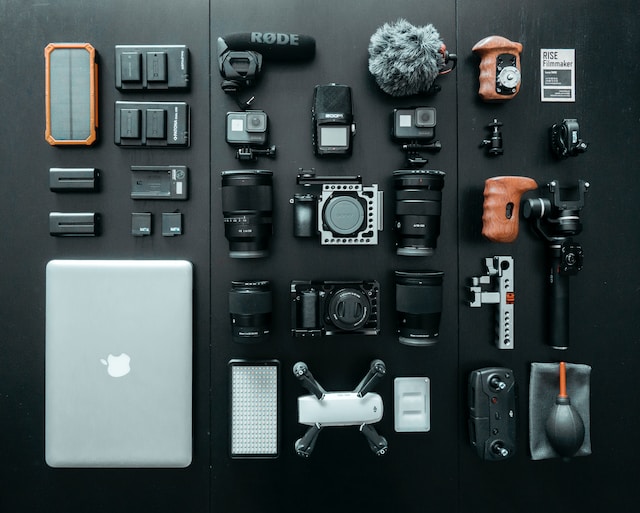
Investment and Equipment
Equipment:
Investing in the right equipment is pivotal for any wildlife photography business. High-quality gear not only enables you to capture stunning wildlife images but also demonstrates a level of professionalism and commitment to your craft. Here’s a breakdown of the essential equipment you’ll need:
Lenses
- Telephoto Lenses: For capturing wildlife from a distance, a high-quality telephoto lens is a must. Lenses with focal lengths ranging from 200mm to 600mm are ideal for this genre of photography.
- Wide-Angle Lenses: These are excellent for capturing landscapes or environmental portraits of animals in their natural habitats. A lens with a focal length between 24mm and 70mm would be suitable.
- Macro Lenses: If your wildlife photography extends to smaller subjects like insects or plants, a macro lens can be incredibly useful.
- Quality and Brand: Invest in lenses from reputable brands and ensure they have features like image stabilization and fast autofocus capabilities.
Camera Bodies
- High-Resolution Sensors: Choose a camera body that offers a high-resolution sensor, which allows for large, detailed prints.
- Fast Autofocus: Wildlife often involves movement, so a camera body with fast and accurate autofocus is crucial.
- Durability: Since you’ll be shooting outdoors, opt for a camera that is weather-sealed and robust enough to handle tough conditions.
Tripods
- Stability: Look for a sturdy tripod that can handle the weight of your camera and lens setup, especially when using heavy telephoto lenses.
- Portability: If you’ll be trekking to capture shots, consider a tripod that is both sturdy and lightweight. Carbon fiber tripods offer a good balance.
- Features: Tripods with features like a gimbal head can be beneficial for tracking movement smoothly.
Field Gear
- Camouflage: Depending on your subjects, you may need camouflage clothing or hides to blend into the environment without disturbing the wildlife.
- Field Bags: Choose a rugged, weather-resistant bag with plenty of compartments to safely store and transport your expensive gear.
- Supportive Footwear: Quality hiking boots or trail shoes are essential for those long days in the field.
- Other Essentials: Don’t forget items like lens cleaning kits, extra batteries, memory cards, and possibly even a portable storage device to back up your photos on the go.
Investing in high-quality photography equipment might seem like a significant upfront cost, but it’s an investment in the quality of your work and, by extension, in your brand. As you gain experience, you’ll also gain a better understanding of what specific gear complements your style and subject matter, allowing you to make more targeted investments in the future.
Software:
In the modern era of digital photography, capturing the image is only half the battle. The post-processing stage is where you can make your photographs come alive, correct any imperfections, and fine-tune details. Investing in the right software is, therefore, a crucial aspect of professional wildlife photography.
Adobe Photoshop
- Versatility and Control: Adobe Photoshop offers an unparalleled level of control over each and every pixel of your image. Whether you need to do complex manipulations like background replacement or simpler tasks like red-eye correction, Photoshop is an indispensable tool.
- Layer-Based Editing: One of the strengths of Photoshop is its layer-based approach to editing. This allows you to make adjustments to individual elements without affecting the entire image, giving you a lot of flexibility to fine-tune your edits.
- Plugins and Extensions: Photoshop’s capabilities can be extended through a wide range of third-party plugins. Whether it’s specialized noise reduction or advanced color grading, there’s likely a plugin that can make your workflow easier.
Adobe Lightroom
- Workflow Efficiency: Lightroom is designed with photographers in mind and offers a more streamlined workflow compared to Photoshop. It’s excellent for tasks like color correction, exposure adjustment, and batch processing.
- RAW Processing: Shooting in RAW format gives you greater latitude in post-processing, and Lightroom excels at RAW file handling. You can adjust variables like exposure, white balance, and contrast non-destructively, meaning you can always revert to the original file.
- Cataloging and Organization: Lightroom also serves as an organizational tool, offering robust cataloging features. You can tag photos, create collections, and even make smart collections that automatically update based on criteria you set.
Integration and Compatibility
- Creative Cloud: Both Photoshop and Lightroom are part of Adobe’s Creative Cloud suite, which means they integrate well with each other and other Adobe products. This is particularly useful if you diversify into other forms of digital media.
- Updates and Support: Being industry-standard software, Adobe ensures frequent updates to both Photoshop and Lightroom, constantly adding new features and improvements.
- Learning Curve: Both applications come with a learning curve, but the investment in time to learn them is well worth the payoff. Numerous tutorials are available to help you master these tools.
Alternative Software
While Photoshop and Lightroom are industry-standard stock photo websites, other options like Capture One or DxO PhotoLab are also available and offer some specialized features that some photographers prefer. However, Adobe’s suite remains the most universally recognized and offers the most comprehensive set of tools for photo editing.
Investing in quality photo editing software is not just about gaining the ability to edit images; it’s about investing in your ongoing education and skill development as a professional photographer. As your skills improve, you’ll find that your software tools are there to meet your growing needs.
Website:
A professional website serves as the digital storefront for your wildlife photography business, offering a one-stop destination where potential clients can view your portfolio, learn about your services, and make purchases. A well-designed and functional website is crucial for building credibility and facilitating business growth. Here’s how you can go about developing your website:
Design and Aesthetics
- Visual Appeal: Given that you’re in a visual field, your website should be aesthetically pleasing. Opt for a clean, uncluttered design that lets your photographs take center stage. Ensure that the color scheme complements your work rather than distracts from it.
- Usability: The site should be easy to navigate, with a clear menu and straightforward layout. User experience is key; potential clients should be able to easily find what they’re looking for.
- Mobile Responsiveness: With an increasing number of users browsing on mobile devices, a mobile-responsive design is not optional. Your website should look and function well on all screen sizes.
Portfolio and Services
- Portfolio Showcase: Your portfolio should be prominently featured, showcasing a curated selection of your best work. High-resolution images, categorization by theme or subject, and perhaps even brief stories behind each photo can enrich the viewer’s experience.
- Service Details: List the services you offer, be it prints, licensing, workshops, or photography sessions. Detailed descriptions, pricing, and terms should be readily accessible.
E-Commerce Functionality
- Online Store: If you plan to sell prints or other products, integrate an e-commerce platform into your website. It should be secure, easy to use, and capable of handling different forms of payment.
- Shopping Experience: Ensure that the shopping cart, checkout process, and customer account areas are intuitive. High-quality images of your products, along with descriptions and pricing, should be clearly displayed.
SEO and Analytics
- Search Engine Optimization (SEO): Optimize your website for search engines to help people find you. This involves keyword research, meta descriptions, and high-quality content that can rank well in search engine results.
- Analytics: Implement tools like Google Analytics to track website visits, page views, and user behavior. This data is invaluable for understanding your audience and optimizing your website for conversions.
Blog and Content Marketing
- Regular Updates: A blog can serve multiple purposes — it can provide valuable information to your audience, help with SEO, and establish you as an expert in your field.
- Email Capture: Include an option for visitors to subscribe to newsletters. This can be a powerful tool for direct marketing and keeping your audience engaged.
Technical Aspects
- Hosting and Domain: Choose reliable web hosting services and register a domain name that aligns with your business name. Uptime and site speed are critical factors to consider.
- Security: SSL certificates for secure data transmission, regular backups, and other security measures are critical, especially if you’re running an online store.
A well-executed website can significantly impact the credibility and success of your wildlife photography business. Investing in professional web development and design services may be beneficial, especially if you’re not versed in website creation. Your website is often the first impression potential clients have of your business, so make it count.
Website:
Ensuring the safety and integrity of your photographic work is paramount in running a successful professional wildlife photographer or photography business. Losing precious images due to hardware failure, data corruption, or any other unforeseen circumstance can be devastating both emotionally and financially. Therefore, a robust backup system should be an essential component of your business strategy. Here’s a closer look at why and how you should invest in reliable storage solutions.
Cloud Storage
- Accessibility: Cloud storage services like Google Drive, Dropbox, or specialized photography cloud services allow you to access your files from anywhere, offering great flexibility. This is especially useful when you’re in the field and want to upload or access files remotely.
- Scalability: Cloud storage solutions are easily scalable. As your portfolio grows, you can opt for larger storage plans without having to worry about physical space.
- Collaboration: If you work with a team or offer client previews, cloud storage can facilitate easy sharing and collaboration.
- Security: Many cloud providers offer robust security measures, including data encryption and two-factor authentication. However, read the terms carefully, especially regarding data ownership and what happens in the event of a data breach.
Physical Hard Drives
- Local Access: Physical hard drives offer the benefit of immediate, offline access to your files. This is particularly beneficial for large RAW files that may take a long time to download from the cloud.
- Cost-effectiveness: After the initial investment, external hard drives do not incur monthly fees, making them cost-effective for long-term storage.
- Control: With physical storage, you have complete control over your data, without having to rely on third-party services, which might shut down, get hacked, or change their terms.
- Multiple Backups: It’s advisable to have multiple external drives for redundancy, perhaps even keeping one in a separate physical location to protect against events like fires or theft.
Hybrid Approach
- Best of Both Worlds: Utilizing both cloud and physical storage options provides multiple layers of security. If one system fails, the other serves as a backup.
- Regular Updates: Whichever storage solutions you choose, regular backups are a must. Make it a part of your workflow to backup files after each shoot and perhaps even daily if you are working extensively.
- Data Management: Keep your files organized in a manner that makes it easy to retrieve images when needed. This can include categorization by date, location, subject, or client, as per what suits your workflow best.
- Security Software: Regardless of your backup solution, ensure that you use reliable security software to protect against malware and data corruption.
Investing in reliable storage solutions should be a top priority for your wildlife photography business. Data loss is not just an inconvenience; it could mean the loss of irreplaceable artistic work and potentially harm your professional reputation. A well-planned backup system provides peace of mind and allows you to focus on what you do best—capturing the beauty of the natural world.
Back-Up:
Ensuring the safety and integrity of your photographic work is paramount in running a successful wildlife photography business. Losing precious images due to hardware failure, data corruption, or any other unforeseen circumstance can be devastating both emotionally and financially. Therefore, a robust backup system should be an essential component of your business strategy. Here’s a closer look at why and how you should invest in reliable storage solutions.
Cloud Storage
- Accessibility: Cloud storage services like Google Drive, Dropbox, or specialized photography cloud services allow you to access your files from anywhere, offering great flexibility. This is especially useful when you’re in the field and want to upload or access files remotely.
- Scalability: Cloud storage solutions are easily scalable. As your portfolio grows, you can opt for larger storage plans without having to worry about physical space.
- Collaboration: If you work with a team or offer client previews, cloud storage can facilitate easy sharing and collaboration.
- Security: Many cloud providers offer robust security measures, including data encryption and two-factor authentication. However, read the terms carefully, especially regarding data ownership and what happens in the event of a data breach.
Physical Hard Drives
- Local Access: Physical hard drives offer the benefit of immediate, offline access to your files. This is particularly beneficial for large RAW files that may take a long time to download from the cloud.
- Cost-effectiveness: After the initial investment, external hard drives do not incur monthly fees, making them cost-effective for long-term storage.
- Control: With physical storage, you have complete control over your data, without having to rely on third-party services, which might shut down, get hacked, or change their terms.
- Multiple Backups: It’s advisable to have multiple external drives for redundancy, perhaps even keeping one in a separate physical location to protect against events like fires or theft.
Hybrid Approach
- Best of Both Worlds: Utilizing both cloud and physical storage options provides multiple layers of security. If one system fails, the other serves as a backup.
- Regular Updates: Whichever storage solutions you choose, regular backups are a must. Make it a part of your workflow to backup files after each shoot and perhaps even daily if you are working extensively.
- Data Management: Keep your files organized in a manner that makes it easy to retrieve images when needed. This can include categorization by date, location, subject, or client, as per what suits your workflow best.
- Security Software: Regardless of your backup solution, ensure that you use reliable security software to protect against malware and data corruption.
Investing in reliable storage solutions should be a top priority for your wildlife photography business. Data loss is not just an inconvenience; it could mean the loss of irreplaceable artistic work and potentially harm your professional reputation. A well-planned backup system provides peace of mind and allows you to focus on what you do best—capturing the beauty of the natural world.
Skill Development
Technical Skills:
In the highly competitive field of wildlife and photography contests, the ability to capture stunning images is just the beginning. Having a comprehensive skill set that includes not only shooting but also post-processing can set you apart from the crowd and offer a more polished, professional product. Below are some key areas where technical skills are vital:
Photography Skills
- Understanding of Equipment: Knowing the ins and outs of your camera, lenses, and other gear is crucial. This includes understanding various shooting modes, ISO settings, aperture, and shutter speed, among other features.
- Composition Techniques: Mastering the rules of composition can help you create more engaging and visually appealing photographs. This includes the rule of thirds, leading lines, and understanding how to effectively use negative space.
- Lighting Knowledge: Understanding natural lighting, golden hours, and how light affects different textures and colors is vital for capturing great wildlife photos.
- Field Skills: Being comfortable and skilled in the great outdoors is essential for wildlife photography. This includes understanding animal behavior to safely and effectively capture them in their natural habitat.
Post-Processing Skills
- Image Editing Software: Proficiency in software like Adobe Photoshop and Lightroom is essential for post-processing. These tools allow you to adjust exposure, color balance, sharpness, and many other elements of an image.
- Retouching: Sometimes you may need to remove unwanted elements from a photo or enhance certain aspects. Skills in retouching can be extremely valuable for this.
- Color Grading: The ability to effectively use color grading can enhance the mood and atmosphere of your photos, turning them from good to great.
- Batch Processing: Learning how to efficiently batch process images can save you enormous amounts of time, especially when dealing with a large number of shots from a single shoot.
Technical Skills Beyond Software
- Data Management: Being organized in how you store and back up your photos can save you a lot of stress and time in the long run. Understanding how to effectively use cloud storage and physical backup drives is crucial.
- File Formats: Understanding the pros and cons of different file formats like JPEG, PNG, and RAW can significantly impact the quality of your final product.
- Printing: If you intend to sell physical prints, knowledge of the printing process, including understanding print resolutions, color spaces, and paper types, is beneficial.
- Web Skills: Basic knowledge of how to manage a website, or at least how to communicate effectively with a web designer, can be advantageous for showcasing your portfolio online.
Mastering both photography and post-processing skills provides you with full control over your artistic vision, from the moment you press the shutter to the final print or digital file. It’s a continuous learning process, and staying updated with the latest techniques and technologies is essential for success in the wildlife photography business. Consider taking workshops, following tutorials, and continually practicing to keep your own photo editing skills both sharp and up to date.
Courses and Certifications:
Investing in your education through courses and certifications can significantly elevate the quality of your work, enhance your credibility, and even open up new opportunities in the wildlife photography industry. Here’s why and how courses and certifications can be beneficial for nature photographers:
Skill Enhancement
- Technical Mastery: While hands-on experience is invaluable, formal courses can provide you with structured lessons that cover all the technical aspects of photography, from mastering your camera settings to understanding light and composition.
- Specialized Techniques: Wildlife photography poses unique challenges such as tracking animal behavior, shooting in diverse lighting and environmental conditions, and ensuring ethical practices. Specialized courses can equip you with these niche skills.
- Post-Processing: Many courses also delve into the essentials of photo editing, teaching you how to make the best use of software like Adobe Photoshop and Lightroom to bring your vision to life.
Credibility and Networking
- Certification: Holding a certification can add credibility to your name, especially when you’re starting out. It shows prospective clients or employers that you have been trained and assessed by professionals.
- Industry Connections: Workshops and courses often offer the opportunity to connect with established photographers and other like-minded individuals. These connections can be invaluable for your growth, whether through collaborative projects, referrals, or mentorship opportunities.
Exposure to Latest Trends and Technologies
- Up-to-Date Learning: Photography is an evolving field with new techniques and technologies emerging regularly. Courses can keep you updated with the latest trends, which can be especially beneficial for maintaining a competitive edge.
- Hands-On Experience with Gear: Some workshops provide opportunities to use the latest equipment, offering you hands-on experience before you decide to invest in new gear yourself.
Flexible Learning Options
- Online Courses: With the rise of e-learning, you can now find a multitude of online courses that allow you to learn at your own pace, from the comfort of your home. This is especially convenient if you have a busy schedule or cannot easily access in-person classes.
- In-Person Workshops: Nothing beats the experience of being on the field, capturing wildlife in their natural habitat under the guidance of an expert. Many photographers and organizations offer on-location workshops that combine theoretical instruction with practical shooting experience.
- College Programs: Some institutions offer more extensive photography programs, even leading to degrees. While this is a significant commitment, it provides a comprehensive education covering not just photography but also aspects like business management, marketing, and ethics.
When selecting courses or certifications, consider factors like the curriculum, the reputation of the instructor or institution, and the needs of your career trajectory. Whether you’re a novice looking to get started or a seasoned wildlife photographer aiming to specialize further, educational courses can offer valuable insights and skills to elevate your wildlife photography business.
Marketing
Social Media:
In today’s digital age, a strong social media presence can be a game-changer for any business, including wildlife and photography businesses. These platforms offer you a way to showcase your portfolio, engage with your audience, and even collaborate with other professionals. Here’s a more in-depth look at how to make the most out of social media for your wildlife photography business:
Platform Selection
- Diversify but Focus: While it’s tempting to have a presence on every social media platform out there, it’s better to focus on a few where you can regularly post and engage. Instagram and Pinterest are particularly effective for visual businesses like photography. Facebook and Twitter can also be beneficial for networking and sharing updates.
- Know Your Audience: Different platforms attract different demographics. Knowing who your target audience is can help you choose the most effective platforms for your business.
Content Strategy
- Showcase Portfolio: Use your social media accounts to showcase your best works. Regular posting keeps your audience engaged and attracts new followers.
- Behind-The-Scenes: People love to see the process behind the finished product. Sharing behind-the-scenes content can add a layer of personality to your brand.
- Educational Content: Sharing tips on wildlife photography or the stories of the animals you capture can position you as an expert in the field.
- Promotions and Announcements: Launching a new collection, or participating in an art fair? Social media is the perfect place to share such updates.
Engagement and Networking
- Interact: Reply to comments on your posts, engage in discussions, and don’t hesitate to jump into direct messages to discuss potential collaborations or business deals.
- Collaborations and Takeovers: Partnering with other photographers or influencers for a social media takeover or a joint project can expose your work to a new audience.
- Join Groups and Forums: Many social media platforms have groups and forums dedicated to photography. These can be gold mines for networking, learning new skills, and even finding new clients or collaborators.
Analytics and Improvement
- Track Metrics: Keep an eye on engagement rates, follower counts, and other metrics to understand what’s working and what’s not. Many social media platforms offer built-in analytics tools, and third-party options are available as well.
- Iterate: Use the insights gained from analytics to refine your social media strategy. Pay attention to the type of content that resonates with your audience and focus on producing more of it.
- Ads and Promotions: If your organic growth is steady but you wish to accelerate, consider using paid promotions or ads. These can be targeted to specific demographics, increasing the chances of reaching potential clients.
Utilizing social media effectively requires a mix of strategic planning, quality content, and genuine engagement. If done right, it can serve as a powerful tool for showcasing your wildlife photography, connecting with your audience, and networking with professionals, thereby driving both brand awareness and business growth.
SEO:
Search Engine Optimization (SEO) is an essential tool for any online business, including a wildlife photography venture. Effective SEO can exponentially increase the visibility of your website, drawing more traffic and ultimately leading to higher sales and brand recognition. Here’s a detailed guide on how to approach SEO for your wildlife photography business:
Keyword Research
- Identifying Keywords: Start by identifying key phrases related to wildlife photography that potential customers might search for. Use tools like Google’s Keyword Planner or other SEO software to find high-volume, low-competition keywords.
- Long-Tail Keywords: Don’t ignore longer, more specific phrases that people might use to find specialized services. For example, “Arctic wolf fine art photography” could be a long-tail keyword pertinent to your business.
On-Page SEO
- Optimize Meta Descriptions and Titles: Each page on your website should have a unique meta title and description containing your target keywords. This not only helps search engines understand the content of your pages but also improves the click-through rate when your page appears in search results.
- Quality Content: Creating high-quality, informative content is vital for SEO. Whether it’s blog posts about your wildlife expeditions, how-to guides on wildlife photography, or detailed product descriptions, content should be engaging and contain relevant keywords naturally.
- Image Optimization: Given that your business is heavily visual, it’s crucial to optimize your images. Use descriptive file names and alt tags for your images, and consider compressing them to improve page load speed.
Technical SEO
- Mobile Optimization: More people are using mobile devices to browse the internet, so make sure your website is mobile-friendly. Google considers mobile usability as a ranking factor.
- Page Speed: Slow-loading pages can frustrate users and negatively impact your SEO rankings. Use tools like Google’s PageSpeed Insights to identify areas for improvement.
- XML Sitemap: An XML sitemap helps search engines index your site more effectively. Most website platforms offer ways to automatically generate and submit a sitemap.
Off-Page SEO
- Backlinks: One of the most effective ways to improve your site’s authority is through backlinks from reputable websites. Consider reaching out to photography blogs, art websites, or environmental organizations that might be interested in featuring your work or collaborating in some way.
- Social Signals: While the relationship between social media activity and SEO rankings isn’t entirely clear, there’s evidence to suggest that positive social engagement can improve your SEO.
Local SEO
- Google My Business: If you have a physical location or offer services in specific areas, make sure to claim and optimize your Google My Business listing, as this can dramatically improve your local search visibility.
- Local Keywords: Include location-specific keywords in your meta descriptions, titles, and content to rank better for local searches.
By systematically implementing these SEO best practices, you can significantly improve your website’s visibility for relevant search terms. It’s an ongoing process, however, that requires regular tweaking and updating. But the rewards, in terms of increased traffic, brand recognition, and ultimately, sales, can be well worth the effort.
Email Marketing:
Email marketing remains one of the most effective ways to directly connect with your audience, especially for a niche business like wildlife photography. A well-executed email marketing campaign can keep your audience engaged, drive sales, and enhance your brand’s presence. Here’s how to approach email marketing for your wildlife photography business:
Email List Building
- Sign-Up Incentives: Offering a small incentive, like a free desktop wallpaper featuring one of your photographs or a downloadable photography guide, can encourage visitors to sign up for your newsletter.
- Website Pop-Ups: A small, non-intrusive pop-up on your website can invite users to subscribe to your newsletter. Ensure that the pop-up is relevant to the content on your site and offers a clear benefit for subscribing
- Social Media & Networking: Use your social media platforms to drive sign-ups. This could be through direct calls to action in your posts, or by using “swipe-up” features in stories on platforms like Instagram.
Content Planning
- Value-Added Content: Your email newsletters should provide value to the recipient. This could be in the form of exclusive behind-the-scenes looks, tips and tricks on wildlife photography, or first looks at new collections.
- Promotional Content: While it’s important not to bombard your audience with sales pitches, occasional emails featuring new releases, special discounts, or upcoming exhibitions can generate excitement and drive sales.
- Frequency & Timing: Plan your emails so they are frequent enough to keep your audience engaged, but not so frequent that they become a nuisance. Finding the right balance is key.
Design & Formatting
- Visual Aesthetic: Given that you’re in a visual industry, your emails should be visually appealing. Incorporate high-quality images, preferably your own work, into the design.
- Mobile Responsiveness: Many people check emails on their mobile devices, so make sure your email templates are mobile-friendly.
- Call-to-Action: Every email should have a specific goal, whether it’s driving sales for a new collection or encouraging readers to check out a blog post. Make sure to include a clear and compelling call-to-action to guide readers.
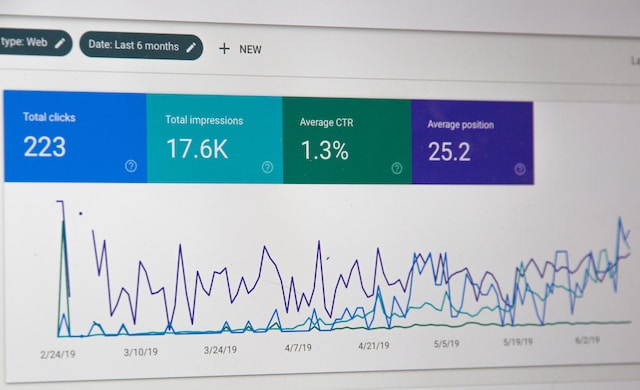
Analytics & Adjustments
- Open & Click Rates: Monitoring these metrics can give you insights into how engaging your emails are. Low open rates may suggest you need a more compelling subject line, while low click rates may indicate that the content isn’t resonating with your audience.
- Conversion Tracking: If the goal of your email is to drive sales, using tracking links can help you directly measure the effectiveness of your email marketing campaigns.
- A/B Testing: Consider running A/B tests to optimize various elements of your emails, from subject lines to button colors. This can help you continually refine your approach and achieve better results over time.
By effectively utilizing email marketing, you can build a more intimate and loyal relationship with your audience. It offers a direct line to your customers, allowing you to engage them in a meaningful way that can lead to increased brand loyalty, higher sales, and a more vibrant community around your wildlife photography work.
Collaborations and Partnerships:
Collaborations and partnerships are powerful tools for any business looking to expand its reach, but they are particularly effective in niche fields like wildlife photography. By associating with relevant organizations or individuals, you can not only gain access to a wider audience but also add credibility to your brand. Here’s a detailed breakdown of how to go about establishing fruitful collaborations and partnerships:
Identifying Potential Partners
- Shared Goals and Values: Whether it’s a non-profit wildlife organization, a photography magazine, or a fellow photographer, look for partners who share your goals and values. This ensures that the collaboration is mutually beneficial and resonates with both parties’ audiences.
- Relevance and Expertise: Choose partners that are relevant to your field and can offer something unique to your audience. For example, a collaboration with a wildlife conservation organization can add an educational layer to your photography work.
Approaching Partners
- Initial Outreach: Start by reaching out through email or social media, but make sure to personalize your messages. Explain why you think a partnership could be beneficial and what you have to offer.
- Proposal and Terms: Once you’ve made initial contact and there’s mutual interest, move on to outlining a formal proposal. Clearly define the terms of the collaboration, responsibilities, and any financial arrangements if applicable.
Types of Collaborations
- Guest Posts and Features: You could write a guest article for a wildlife magazine or blog, or feature their content on your own platform. This is an excellent way to cross-promote and share audiences.
- Joint Projects: Whether it’s a photographic series, an exhibition, or a social media campaign, working on a project with another photographer can not only share the workload but also double the promotional power.
- Affiliate Programs: Partnering with gear companies or photography software firms for affiliate marketing can be a win-win. You promote their product to your audience and earn a commission on any sales generated through your unique link.
Promotion and Engagement
- Social Media Teasers: Prior to the launch of any collaboration, generate buzz by teasing it on social media. Tagging your partner organization will expose your work to their followers, and vice versa.
- Launch and Beyond: Once the collaboration is live, promote it aggressively through all available channels: social media, newsletters, and even press releases if the project is significant enough.
- Engage: Keep an eye on how your audience is reacting to the collaboration. Respond to comments, answer questions, and encourage your partner to do the same.
Post-Collaboration Analysis
- Review Metrics: After the collaboration, take the time to review analytics and metrics. This will help you understand what worked and what didn’t, providing insights for future collaborations.
- Follow-Up: Don’t forget to follow up with your partner. Whether it’s a simple thank-you note or a discussion about how things went, maintaining a good relationship could lead to future collaborations.
By carefully planning your collaborations and partnerships with local businesses, you can significantly extend your reach and add depth to your brand’s identity. For a wildlife photographer, these collaborations can also offer a chance to contribute positively to the field of wildlife conservation, education, and awareness, making them not just a business strategy but also a fulfilling endeavor.

Sales
Pricing:
Determining the right pricing strategy is a critical aspect of turning your wildlife photography passion into a sustainable business. Pricing not only affects your profitability but also positions your brand in the market. Since your successful photography business often involves multiple revenue streams like selling prints, licensing photos, and potentially offering workshops, here’s how to approach each:
Pricing Prints
- Cost Analysis: Begin by calculating the cost of production, including the quality of paper used for prints, printing technology, framing options, and any other costs involved.
- Market Research: Research how similar works are priced in the market. Aim to place your work competitively but also in a way that reflects its uniqueness and quality.
- Value Addition: Offer limited editions or signed prints at a premium. This not only increases the perceived value but can also drive urgency in potential buyers.
Licensing Photos
- License Types: Decide what types of licenses you will offer. Will you offer rights-managed licenses, royalty-free licenses, or both? Each has its pricing model and appropriate use-cases.
- Pricing Factors: The cost of a license could depend on various factors like usage, distribution scale, and exclusivity. Make sure to have a well-defined pricing structure.
- Contracts and Agreements: Always ensure you have legal contracts in place for licensing, specifying the allowed and prohibited uses of your photos, the duration of the license, and any other terms.
Offering Workshops
- Cost of Delivery: Consider the cost of venue hire (if applicable), materials, your time, and any other overheads when pricing workshops.
- Competitive Analysis: Just like with prints, look at what similar workshops are priced at. However, remember that your unique expertise and the quality of the workshop also add value.
- Tiered Pricing: Offering different levels of workshops – from beginner to advanced – allows you to vary pricing and caters to a broader range of customers.
General Strategies
- Discounts and Packages: Consider offering package deals, seasonal discounts, or early-bird pricing as a strategy to attract more customers. But use them judiciously so as not to devalue your work.
- Transparency: Be transparent about your pricing; hidden costs can deter potential buyers and harm your reputation.
- Review and Adjust: The market isn’t static. Regularly review your pricing strategy to ensure it aligns with your brand positioning, market demand, and business goals.
- Know Your Worth: This is perhaps the most critical point. Don’t undervalue your work; the price should reflect not just the material costs but also your skill, experience, and the unique vision you bring to wildlife photography.
- Communication: Be prepared to articulate the value of your work to potential customers or licensees. Many times, the story behind a photograph can be as valuable as the image itself.
By carefully constructing your pricing strategy, you not only ensure that your wildlife photography business is profitable but also that it reflects the quality and uniqueness of your work. Remember, the right price is a balance between what it costs you to produce the work and what the market is willing to pay for it.
Payment Gateway:
Setting up a secure payment gateway is crucial for handling transactions on your website, especially if you’re selling high-value fine art prints or other premium services. The right payment gateway not only makes the purchase process smoother for the customer but also ensures that financial data is securely handled, instilling trust and encouraging repeat business. Here’s how to go about setting up a payment gateway for your wildlife photography business:
Research and Selection
- Compatibility: Ensure that the payment gateway you’re considering is compatible with your website’s platform. For example, if you’re using WordPress, the gateway should ideally have a WordPress plugin for easy integration.
- Features: Look for features like multi-currency support, automated invoicing, and customizable checkout experiences. These can provide added convenience for both you and your customers.
- Security: Opt for a gateway that is PCI DSS (Payment Card Industry Data Security Standard) compliant and has robust encryption methods to safeguard financial data.
- Cost: Payment gateways generally charge a fee per transaction, and some may have setup or monthly fees. Factor these costs into your pricing strategy.
Integration
- API or Plugin: Depending on your technical skills and your website’s platform, you can integrate the payment gateway through its API or by using a plugin. Some website builders have built-in support for popular gateways, making the process even more straightforward.
- Testing: Most payment gateways offer a sandbox environment for testing. Make sure to thoroughly test the process to ensure that transactions go through correctly, and that you receive the payments.
- User Experience: During integration, pay attention to the user experience. The payment process should be as seamless as possible, with minimal steps. Too many steps can lead to cart abandonment.
Post-Integration
- Monitoring: Once your payment gateway is live, continuously monitor transactions to ensure everything is working as expected. Keep an eye out for any failed transactions and try to understand what might have gone wrong.
- Customer Support: Make sure to offer clear guidance on how the payment process works and provide immediate support for any issues customers may face during the transaction. This builds trust and can affect your brand reputation positively.
- Updates and Maintenance: Payment gateways regularly roll out updates for security and performance enhancements. Keep your system updated to benefit from these improvements and ensure continued security.
Security Measures
- Data Encryption: Use SSL certificates to ensure that customer data is encrypted during transmission between your website and the payment gateway.
- Fraud Detection: Some advanced payment gateways offer additional fraud detection tools. These can be beneficial in identifying and preventing suspicious activity.
- Backups and Contingency: Always have a backup plan in place in case of failure in the payment system. Inform customers clearly and offer alternative methods of payment if needed.
Having a reliable and secure payment gateway is critical for running an online business, especially one that deals in high-value transactions like fine art photography. By carefully choosing and integrating your payment gateway, you make the purchasing process smooth and secure, encouraging trust and customer loyalty.
Shipping:
Shipping is an essential component of your wildlife photography business if you’re selling physical prints. It can also be a significant differentiator, affecting both your costs and your customer’s satisfaction. Given the high value and often delicate nature of fine art prints, it’s critical that your shipping process is efficient, cost-effective, and ensures the safe delivery of your most sell fine art prints. Here’s a detailed guide on formulating your shipping strategy:
Choose the Right Shipping Partner
- Reputation: Partner with shipping companies that are known for reliable and safe delivery, especially when it comes to fragile items like art prints.
- International Capabilities: If you have a global customer base, your shipping partner should have robust international shipping capabilities, including customs handling.
- Cost: Evaluate the shipping rates, keeping in mind that cheaper is not always better. The priority should be the safety and speed of delivery.
- Insurance: Ensure that the shipping partner offers insurance options for high-value items.
Packaging Solutions
- Protective Packaging: Given that you’re shipping art, the packaging needs to protect against moisture, bending, and other potential damage. Acid-free paper, bubble wrap, and sturdy boxes are a must.
- Branding: Custom packaging with your brand logo can offer a premium unboxing experience for the customer, reinforcing the value of your artwork.
- Sustainability: Given the nature-centric focus of wildlife photography, sustainable or recyclable packaging can be a significant selling point.
Shipping Costs and Policies
- Transparent Pricing: Always be transparent about shipping costs. If possible, include a shipping calculator on your website.
- Free Shipping: Depending on your pricing strategy, consider offering free shipping for orders above a certain value as an incentive for larger purchases.
- Shipping Time: Clearly indicate estimated shipping times, and keep the customer informed with tracking information and delivery updates.
Handling Returns
- Return Policy: Have a clear and straightforward return policy. For art, returns might be less frequent, but mishaps can happen, and customers appreciate knowing their options.
- Damage Control: In the event of a damaged delivery, have a simple and quick process for the customer to get a replacement.
Quality Checks
- Pre-Shipment Inspections: Always conduct quality checks before shipping, ensuring that the print is in perfect condition.
- Documentation: Include any certificates of authenticity or care instructions for the art print in the package.
Technology Integration
- Automated Updates: Integrate your website with your shipping partner’s system for automated tracking updates and inventory management.
- Shipping Analytics: Utilize shipping data to analyze costs, delivery efficiency, and customer satisfaction to continually refine your shipping strategy.
By carefully considering each of these factors, you can develop a shipping strategy that complements the premium nature of your wildlife photography prints, ensures customer satisfaction, and aligns with your business objectives. Remember, the shipping experience is an extension of your brand, and how well it’s executed can significantly impact your business reputation and customer loyalty.
Customer Relations
Client Engagement:
Client engagement is a cornerstone for any successful business, particularly one that deals in premium, high-value products like fine art wildlife photography. Engaging effectively with your clients not only aids in conversion but also helps in building long-term relationships, fostering loyalty, and encouraging repeat business. Here are some aspects to consider when it comes to client engagement:
Prompt Response to Inquiries
- Automated Systems: Utilize automated email responses or chatbots to acknowledge inquiries immediately, informing customers that you will get back to them as soon as possible.
- Timely Follow-Up: Aim to provide a more detailed, personalized response within 24 hours. Even if you don’t have all the answers right away, letting the client know that you’re actively working on their inquiry can go a long way.
- Multiple Channels: Make sure you’re able to respond to inquiries across all platforms where your business has a presence, be it email, social media, or your website’s chat feature.
Excellent Customer Service
- Personalization: Take the time to personalize your interactions. Use the client’s name and refer to any past interactions or purchases to make the engagement more meaningful.
- Transparency: Be transparent about pricing, shipping costs, delivery times, and any other factors that will affect the client’s decision to purchase.
- Expert Guidance: Given that you’re dealing with a specialized form of art, prospective clients may value your expert opinion on framing options, the best way to display the art, or even the story behind the photograph.
- After-Sales Support: The client engagement process doesn’t end after a sale. Make sure to follow up with customers to ensure they are satisfied with their purchase and to inform them about care and maintenance, especially for fine art prints.
Building Relationships
- Newsletters: Keep your clients engaged by sending regular newsletters that offer value. This could be updates on your latest shoots, tips on art conservation, or even special offers and early access to new collections.
- Feedback Loop: Encourage and actively seek feedback from your clients. Not only does this provide you with valuable insights, but it also makes the client feel heard and valued.
- Loyalty Programs: Consider implementing a loyalty program that rewards repeat purchases, offering discounts or exclusive previews to members.
- Special Occasions: Recognize special occasions like client birthdays or anniversaries with a personalized note or special offer, which can go a long way in solidifying a long-term relationship.
Crisis Management
- Issue Resolution: If a client is dissatisfied, address the issue promptly and professionally, offering solutions and ensuring the client feels heard.
- Transparency: If there are delays or problems, such as shipping issues, communicate this openly and clearly, offering alternative solutions when possible.
Engaging effectively with your clients requires a multi-faceted approach, involving prompt communication, exceptional service, and a genuine interest in building a relationship. Each interaction should leave the client feeling valued and confident in their decision to engage with your brand. Remember, in a high-value, niche market, word-of-mouth and client satisfaction can be your most effective forms of marketing.
Feedback and Reviews:
In a niche and premium market like fine art and professional wildlife photographers’ photography, feedback and reviews play a significant role in influencing potential buyers. Authentic, positive testimonials can serve as powerful endorsements of your work and your brand, thereby building credibility and trust. Here are some strategies for encouraging and utilizing client feedback effectively:
Collection of Reviews
- Timely Requests: The best time to ask for a review is soon after the client has received their art and has had a chance to appreciate it. They’re likely to be at their most enthusiastic during this period.
- Ease of Use: Make it as easy as possible for clients to leave a review. This could mean providing a direct link to the review form, or even using QR codes that can be scanned to access the review page.
- Incentives: While the quality of your art should be incentive enough for a review, small incentives like discounts on future purchases can serve as a thank-you and encourage more detailed feedback.
Utilization of Reviews
- Showcase: Feature the most glowing reviews prominently on your website, perhaps on the homepage or on individual product pages. This can offer social proof to potential buyers, making them more comfortable with making a purchase.
- Social Media: Share reviews as posts or stories on social media to reach a broader audience. This not only serves as a testimonial but also acknowledges and appreciates the time the client took to write the review.
- Marketing Material: Reviews can be incorporated into various marketing materials, be it online advertisements, brochures, or even as part of your email marketing campaigns.
Authenticity and Transparency
- Real Clients, Real Reviews: Always ensure that the reviews you showcase are authentic. Fake reviews can seriously damage your reputation if discovered.
- Full Picture: While it’s natural to showcase the most positive reviews, don’t shy away from constructive criticism. Address any concerns openly, showing potential clients that you’re committed to continuous improvement.
Leveraging Reviews for Improvement
- Actionable Insights: Reviews often contain insights that can help you improve various aspects of your business, from the quality of your art to the efficiency of your shipping. Take these to heart and consider making operational changes based on this feedback.
- Engagement: Respond to reviews, both positive and negative, in a polite and professional manner. This not only shows that you value client feedback but also gives you a chance to clarify any misconceptions or provide additional information.
- Reputation Management: Keep an eye on reviews not just on your own website, but also on any other platforms where your work might be discussed. This will help you manage your reputation effectively.
By actively encouraging and smartly utilizing client feedback and reviews, you can add another layer of credibility and authenticity to your wildlife photography business. Given the high-value nature of your products, this kind of social proof is invaluable in attracting and converting potential clients
Updates and Improvements:
In any creative and entrepreneurial field, staying static is the fastest route to obsolescence. This is especially true in the realm of fine art wildlife photography, where both artistic trends and technological advancements can shift rapidly. Staying updated and making continual improvements are essential for sustained success. Here’s how to go about it:
Skill Upgradation
- Continuous Learning: Photography, like any art form, is continuously evolving. New techniques, styles, and approaches are constantly emerging. Dedicate time to learn these new skills, whether through online courses, workshops, or mentorship programs.
- Post-Processing Mastery: Software like Photoshop and Lightroom are regularly updated with new features. Make sure you’re up to speed on the latest tools and techniques for post-processing to get the most out of your shots.
- Industry Knowledge: Stay abreast of developments not just in photography but also in wildlife conservation, ecological trends, and similar areas that could inform and enrich your work.
Equipment Updates
- Technological Advances: Cameras and lenses are continually improving, offering higher resolutions, better low-light performance, and more. While you don’t have to buy every new piece of equipment that comes out, staying current on what’s available will help you make informed decisions when it is time to upgrade.
- Maintenance: Alongside purchasing new equipment, regular maintenance of your current gear is essential. Regularly clean lenses, update firmware and ensure all equipment is in optimal working condition.
- Accessories: Don’t overlook the importance of updated accessories like memory cards, tripods, or even drones that could offer new perspectives for your photography.
Business Strategy Refinement
- Market Trends: The tastes and preferences of your target audience can change. Periodically review your sales and customer feedback to see what types of photos are most popular and plan your future projects accordingly.
- Pricing Strategy: Your pricing isn’t set in stone. As your brand gains recognition, you may find that you can adjust your pricing strategy. Additionally, limited edition releases or premium products can attract a different set of clients.
- Marketing Channels: The effectiveness of various marketing channels can fluctuate. Maybe your email newsletter isn’t garnering as much engagement as it used to, or perhaps a new social media platform is where your audience has moved. Be ready to pivot your marketing strategies in response to these changes.
Feedback Loops
- Client Feedback: As your business grows, continually seek feedback from your clients to identify areas for improvement and also to recognize what you’re doing right.
- Analytics: Use analytics tools to track visitor behavior on your website, the performance of different products, and the ROI of various marketing strategies. This data is invaluable for making informed decisions.
- Competitive Analysis: Keep an eye on what your competitors are doing, both in terms of the art they’re producing and how they’re marketing it. This can offer valuable insights and perhaps inspire you to try new approaches.
By making a commitment to ongoing updates and improvements in these areas, you not only ensure that your work and business practices stay current, but you also build a brand that is resilient, adaptable, and poised for long-term success
Community:
Building a community around your fine art wildlife photography brand can be one of the most rewarding and impactful business strategies you undertake. A strong, engaged community not only provides a solid customer base but also becomes a self-sustaining marketing tool through word-of-mouth and social sharing. Here’s how to go about fostering such a community:
Social Media Engagement
- Consistency: Maintain a consistent posting schedule across all social media platforms where your brand has a presence. Consistency builds expectations and keeps your audience engaged.
- Value-Driven Content: Don’t just showcase your latest works; offer value in the form of behind-the-scenes looks, tips on wildlife photography, or stories about your subjects. This not only educates but also deepens the emotional connection between you and your community.
- Interactive Posts: Use features like polls, questions, or live videos to directly interact with your followers. This makes them feel involved in your creative process and more connected to your brand.
Blogging
- Educational Posts: Share your expertise in the form of how-to guides, equipment reviews, or insights into the wildlife you photograph. This not only positions you as an expert but also attracts a broader audience who might be interested in the technical or educational aspects of your work.
- Storytelling: Use your blog to tell more extended stories about your photography adventures, conservation issues, or the tales behind specific images. This adds a narrative layer to your work, making it even more compelling.
- Guest Posts: Invite other photographers, conservationists, or experts in related fields to contribute guest posts. This brings in fresh perspectives and can attract their followers to your community.
Workshops and Webinars
- Skill-Sharing: Organize workshops, either in-person or online, to share your skills and experiences. These sessions can range from beginner classes to specialized masterclasses focusing on certain aspects of wildlife photography.
- Community Building: Use these events as an opportunity to foster a sense of community. Encourage participants to share their work, offer each other feedback, and network.
- Revenue Stream: These workshops and webinars can also serve as an additional revenue stream, further diversifying your business.
Community Outreach
- Collaborations: Partner with wildlife organizations, conservation charities, or other photographers to co-create content or host events. This not only expands your reach but also aligns your brand with meaningful causes.
- User-Generated Content: Encourage your community to share their own wildlife photographs or experiences with your brand, using a dedicated hashtag. Feature these posts on your profile to foster a sense of belonging and ownership among your followers.
- Feedback Channel: Openly ask for and act on feedback from your community. Whether it’s about your work, a new product line, or an upcoming event, involving your audience in these decisions makes them feel invested in your brand.
By proactively engaging with your audience in these ways, you’ll be doing more than just selling art; you’ll be creating a network of passionate supporters who are invested in your brand, your art, and the values that your work embodies. Over time, this community can become one of your most valuable assets, serving as brand ambassadors who do some of your marketing for you through their enthusiasm and loyalty.
Analytics:
In today’s digital age, analytics offer a crucial lens through which you can observe and understand your business. They provide actionable insights into customer behavior, product performance, and overall business metrics that can profoundly impact your strategies. Here’s how to effectively incorporate analytics into your fine art wildlife portrait photography business:
Understanding Customer Behavior
- User Engagement: Tools like Google Analytics can provide you with detailed data on how visitors are engaging with your website. This can include metrics like time spent on the site, pages viewed per session, and bounce rate. Understanding these can help you optimize your website for better engagement and longer visits.
- User Journey: Analytics can track the customer’s path through your website, showing you where they drop off or convert into a sale. This ‘funnel analysis’ is invaluable for understanding bottlenecks in the user experience and areas for improvement.
- Customer Demographics: Understanding the demographics of your audience—age, location, gender, and interests—can inform both your creative and marketing strategies. Tailoring your messaging to resonate with your primary audience can lead to better engagement and sales.
Popular Products
- Sales Data: Your eCommerce platform will usually provide detailed sales analytics. Monitor which prints or products are most popular, what sizes or formats are preferred, and even when these items tend to sell. This can inform your inventory management, as well as future creative directions.
- Seasonal Trends: Sales data often reveal seasonal trends or patterns aligned with holidays, wildlife seasons, or other factors. Recognizing these can allow you to prepare promotional campaigns or limited-time offers to maximize sales during peak periods.
Overall Business Performance
- ROI on Marketing: Utilize analytics to gauge the return on investment (ROI) of various marketing channels. Whether it’s a social media campaign, email marketing, or paid advertisements, knowing what’s delivering the best ROI helps you allocate resources more efficiently.
- Customer Lifetime Value: Understanding the long-term value of a customer can help you make informed decisions on how much to invest in customer acquisition and retention.
- Website Performance: Website loading speed, mobile responsiveness, and other technical factors can impact user experience and SEO rankings. Regularly monitor these metrics and make necessary adjustments.
Making Adjustments
- Data-Driven Decisions: As you collect more data, it’s important to update your business plan and strategies accordingly. Whether it’s changing pricing models, focusing on a different target audience, or revising your marketing approach, let the analytics guide you.
- Regular Reviews: Set aside time regularly—be it weekly, monthly, or quarterly—to review your analytics in depth. Consider this an integral part of your business routine.
- Consult Experts: As your business grows, you may find it beneficial to consult with data analysts or digital marketing experts to delve deeper into your analytics. They can offer specialized insights and suggest more complex strategies for growth.
Incorporating a strong analytics review regimen into your business workflow enables you to make educated decisions, better connect with your customers, and adapt dynamically to market trends and consumer behavior. As the saying goes, “What gets measured gets managed.” Through rigorous analysis, you can continually refine your business to achieve sustained success.
Conclusion:
Embarking on the journey to turn your passion for wildlife photography into a successful business is an exhilarating venture filled with both challenges and triumphs. You’re not merely capturing moments; you’re immortalizing the beauty and majesty of the natural world, creating artwork that resonates with people and elevates spaces. Remember, each photograph you take is not just a snapshot; it’s a story, an advocacy, and a legacy.
You’re armed now with a comprehensive guide covering every facet of your nature photography business, from the groundwork of market research to the continual evolution of your skills and strategies. With dedication, strategic planning, and a responsive approach to both your art and your audience, you can build not just a business but a brand that stands as a beacon in the fine art wildlife photography space.
There will be challenges, no doubt—technical hurdles, market fluctuations, and competitive pressures—but each obstacle presents an opportunity for growth and learning. The road to success isn’t always easy, but the most worthwhile pursuits rarely are. As you navigate this path, let your passion be your compass and your community your map. Analytics and business plans provide the methodology, but your vision and creativity are the souls that will make your brand unforgettable.
Keep learning, keep shooting, and keep inspiring. Your unique lens has the power to bring the splendor of the wild into people’s lives, creating emotional and meaningful connections that transcend mere aesthetics. Believe in yourself and your art, and the world will soon follow.
So, go ahead—take that next step, capture that next shot, and share your extraordinary vision with the world. Your journey has only just begun, and the horizon is limitless.

